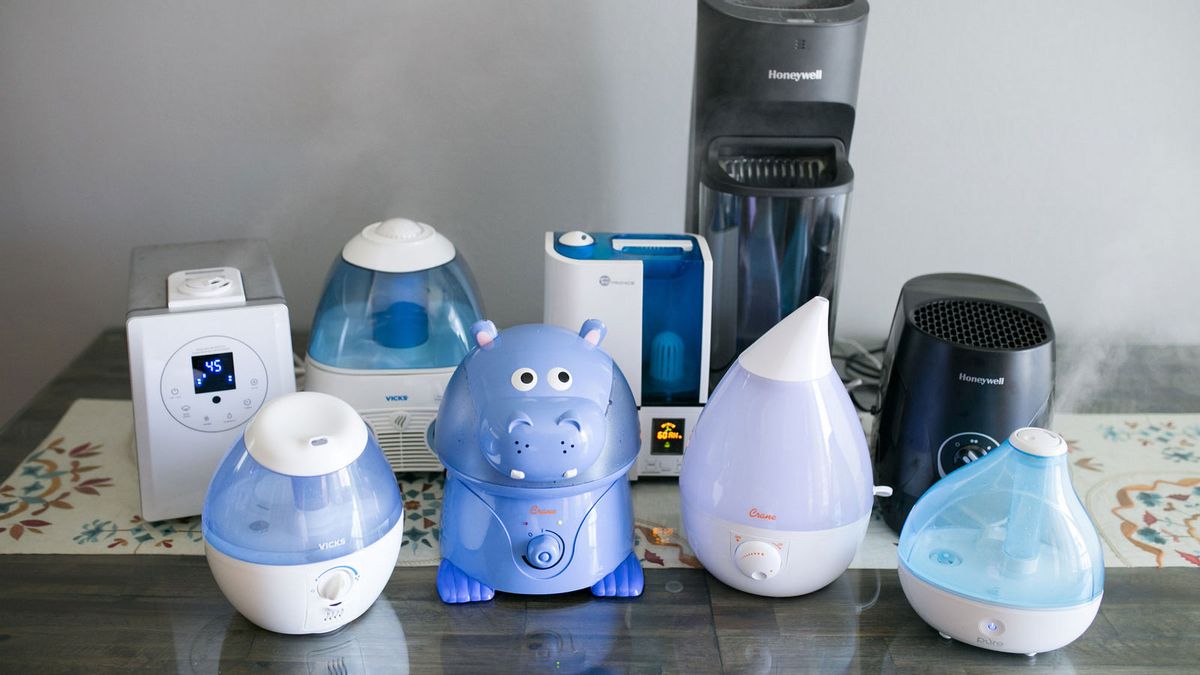The Humidifier Dilemma: When the Mist Disappears
Mini humidifiers have become an indispensable part of our homes, offering respite from dry air that can lead to skin irritation, respiratory issues, and sleepless nights. However, even the most reliable of devices can occasionally malfunction, leaving us wondering why our once-misty haven has turned into a silent box.

Image: www.humidifiergeek.com
Common Causes and Troubleshooting Methods
If your mini humidifier has stopped producing mist, don’t despair. In most cases, the issue can be easily resolved. Here are some common causes and troubleshooting tips to get your humidifier back up and running:
Clogged Water Tank
The most common culprit for a non-misting humidifier is a clogged water tank. Minerals and impurities in water can build up over time, blocking the filter and preventing water from reaching the nebulizer. To clean the water tank, follow these steps:
- Unplug the humidifier and empty the water tank.
- Fill the tank with a solution of equal parts water and white vinegar.
- Let the solution sit for 30 minutes.
- Empty the tank and rinse it thoroughly with clean water.
- Use a cotton swab dipped in vinegar to clean the filter.
- Rinse the filter and reassemble the humidifier.
Low Water Level
Another simple yet common reason for a lack of mist is low water levels. When the water tank is not filled to the required level, the humidifier cannot produce mist. Ensure that the water tank is always filled to the indicated max line and check it regularly, especially during extended use.

Image: home.howstuffworks.com
Faulty Nebulizer
The nebulizer is the heart of the humidifier, responsible for creating the fine mist. If the nebulizer is damaged or malfunctioning, it will not produce mist. Signs of a faulty nebulizer include a humming noise without mist, overheating, or water leaking from the base of the humidifier. If you suspect a faulty nebulizer, contact the humidifier manufacturer or a qualified repair technician for assistance.
Expert Advice
In addition to the troubleshooting tips above, consider these expert recommendations to keep your mini humidifier in top shape:
- Use distilled water: Distilled water is free of minerals and impurities, reducing the likelihood of clogging the filter and nebulizer.
- Regularly clean the humidifier: Cleaning the humidifier weekly or as often as recommended by the manufacturer is crucial for preventing clogs and maintaining optimal performance.
- Replace the filter: Most mini humidifiers have a filter that needs to be replaced regularly to ensure efficient mist production.
FAQ
Q: How often should I clean my mini humidifier?
A: Generally, it’s recommended to clean your mini humidifier weekly or as often as recommended by the manufacturer.
Q: What happens if I don’t clean my mini humidifier?
A: Neglecting to clean your mini humidifier can lead to a build-up of minerals and bacteria, reducing its efficiency and potentially posing health risks.
Q: Can I use tap water in my mini humidifier?
A: While it’s not ideal, you can use tap water in your mini humidifier. However, using distilled water is highly recommended as it prevents mineral build-up and prolongs the life of the humidifier.
Q: Why is my mini humidifier making a humming noise?
A: A humming noise without mist usually indicates a faulty nebulizer. Contact the manufacturer or a qualified repair technician for assistance.
How To Fix Mini Humidifier No Mist
Conclusion
Bringing back the mist to your mini humidifier is often a simple matter of troubleshooting common issues like clogs and low water levels. By following the steps outlined above and incorporating expert advice, you can keep your humidifier running smoothly, ensuring a comfortable and healthy indoor environment.
Is your mini humidifier giving you trouble? Share your experiences and ask for help in the comments below. Together, we can keep our homes and our sinuses hydrated!